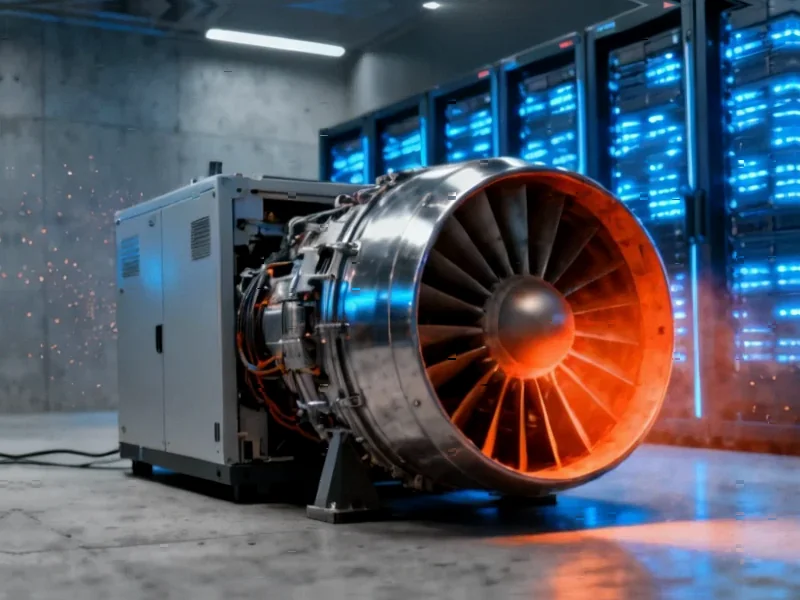According to Forbes, industrial AI represents both a climate solution and problem, with the market projected to grow fortyfold from $4.35 billion in 2024 to massive scale by 2034. The International Energy Agency warns that data-center electricity use, driven largely by AI training and inference, could double by 2030, while a 2025 UK government report projects global data-center water consumption will surge from 1.1 to 6.6 billion cubic meters by 2027. Companies like Optimise AI are already delivering 40% energy savings for clients through semantic digital twins, while research from the University of Oxford’s Environmental Change Institute identifies this expansion as a new form of systemic climate risk. The industrial AI revolution is underway, but its environmental footprint demands immediate attention.
The Stakeholder Sustainability Dilemma
Industrial AI creates a complex web of stakeholder tensions that the original analysis only hints at. For facility managers and plant operators, the pressure is immense: deliver immediate efficiency gains while navigating the technology’s own environmental costs. The demographic crisis—with half of plant operators nearing retirement—forces adoption of AI tools, but this creates new dependencies on energy-intensive computing infrastructure. Meanwhile, sustainability officers face the uncomfortable reality that their decarbonization tools may be contributing to scope 2 emissions through massive data center energy consumption. This creates a paradox where achieving sustainability targets requires technologies that themselves challenge those very targets.
Geographic and Economic Disparity in Adoption
The industrial AI revolution won’t unfold evenly across global markets, creating significant competitive advantages for early adopters while leaving others behind. Mature industrial economies like Japan, Germany, and the U.S. face the steepest demographic cliffs, forcing rapid AI adoption despite higher energy costs. Emerging markets, meanwhile, confront a different challenge: they have younger workforces but lack the digital infrastructure and capital to implement industrial AI at scale. This could create a new form of industrial divide where developed nations use AI to maintain competitive advantage while developing economies struggle to access the very tools needed for sustainable industrialization. The risk is that industrial AI becomes another technology that widens rather than closes global economic gaps.
The Non-Negotiable Cybersecurity Imperative
As industrial AI systems become embedded in critical infrastructure, cybersecurity moves from IT concern to existential business risk. The mention of Cyber Essentials Plus certification and Azure firewalls barely scratches the surface of what’s required. For energy grids, manufacturing plants, and transportation systems, a security breach could mean physical damage, environmental disasters, or public safety threats—not just data loss. This creates massive liability concerns for executives who must balance the efficiency gains of cloud-based AI against the catastrophic risks of connecting operational technology to external networks. The insurance industry will likely drive much of this conversation, with premiums and coverage terms becoming key determinants of which AI solutions enterprises can actually deploy.
The Coming Regulatory Storm
Current voluntary frameworks around AI ethics and sustainability will inevitably harden into binding regulation, creating both compliance burdens and market opportunities. The European Union’s AI Act already points toward this future, but industrial applications will face particular scrutiny given their environmental and safety implications. Companies that can demonstrate genuine emissions reductions through AI—while minimizing the technology’s own footprint—will gain regulatory advantage. Meanwhile, the tension between operational data transparency and proprietary business practices will create friction. As research from Oxford’s Environmental Change Institute indicates, the systemic risks extend beyond individual companies to entire economic systems.
The Human Capital Transformation
The shift from experienced operators to AI-augmented teams represents one of the most profound workforce transformations since industrialization. The real challenge isn’t technical implementation but cultural adaptation. Veteran operators who’ve spent decades developing intuitive understanding of complex systems must now trust algorithmic recommendations, while new entrants risk becoming dependent on AI without developing fundamental operational knowledge. This creates a “expertise gap” where neither human intuition nor machine learning fully understands the system. The most successful organizations will be those that treat industrial AI as a partnership rather than replacement, creating continuous learning loops where human experience improves AI models and AI insights enhance human decision-making.
The Evolving Investment Landscape
The fortyfold market growth projection signals a fundamental reallocation of industrial capital, but not all investments will deliver equal returns. Early-stage technologies promising massive efficiency gains often overlook implementation costs, training requirements, and lifecycle management. Meanwhile, the Arthur D. Little analysis suggesting 90% predictive maintenance accuracy sets high expectations that real-world systems may struggle to meet consistently. Investors must distinguish between AI solutions that deliver genuine operational resilience versus those that simply automate existing processes. The most valuable implementations will be those that create adaptive systems capable of responding to unforeseen conditions—exactly the kind of challenges human operators have traditionally handled through experience and intuition.
The Sustainability Accountability Challenge
As industrial AI expands into ESG reporting, the gap between measured performance and actual impact becomes a critical business risk. The technology’s ability to “semi-autonomously deliver ESG outcomes” sounds promising, but raises questions about verification and accountability. When AI systems automatically optimize for sustainability metrics, who verifies that reported improvements reflect real-world benefits? This creates potential for “greenwashing by algorithm” where systems are optimized for measurable proxies rather than genuine environmental outcomes. The companies that navigate this successfully will be those that maintain human oversight of AI-driven sustainability initiatives while using the technology to identify previously invisible improvement opportunities.
The industrial AI revolution represents one of the most significant technological shifts since digitalization, but its success will depend on navigating complex trade-offs between efficiency and sustainability, automation and employment, innovation and stability. The companies that thrive will be those that recognize industrial AI not as a silver bullet but as a powerful tool that requires careful governance, continuous learning, and above all, clear-eyed understanding of both its potential and its limitations.





Your point of view caught my eye and was very interesting. Thanks. I have a question for you.